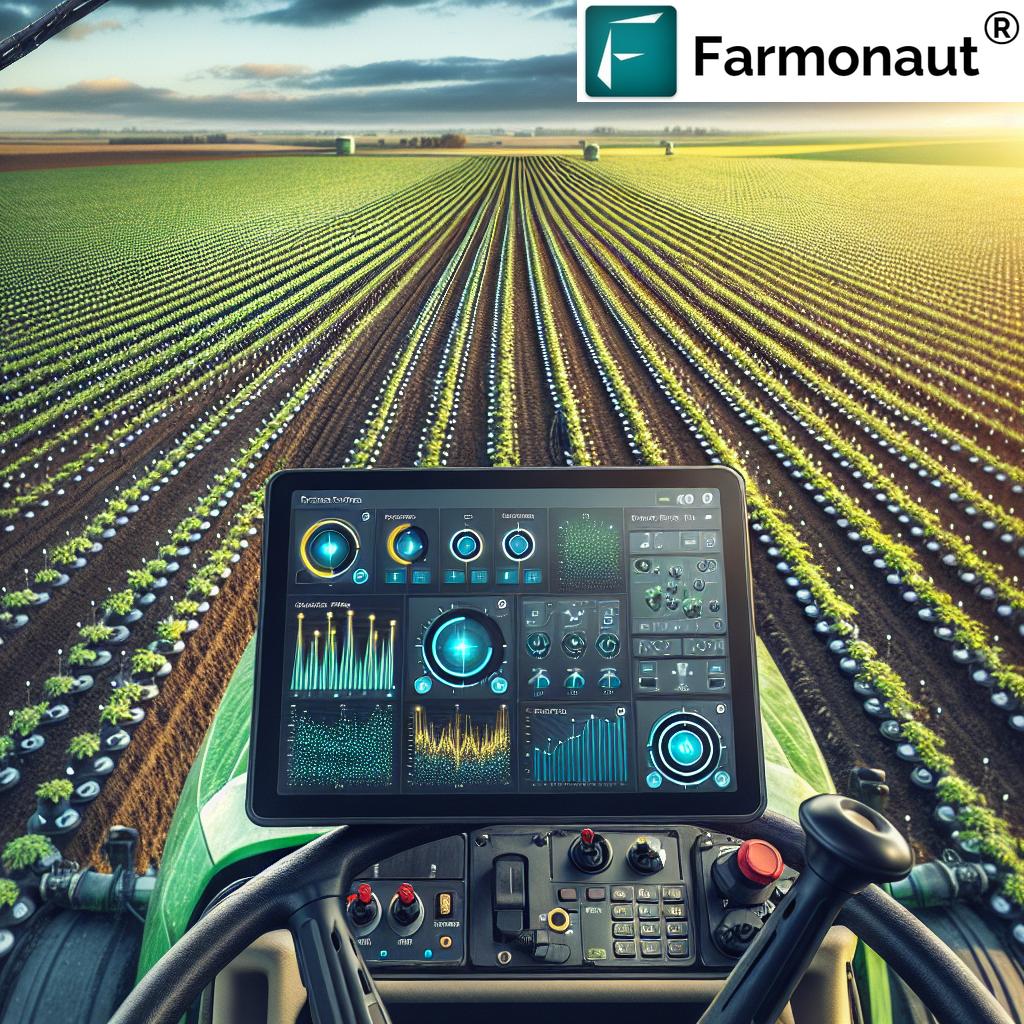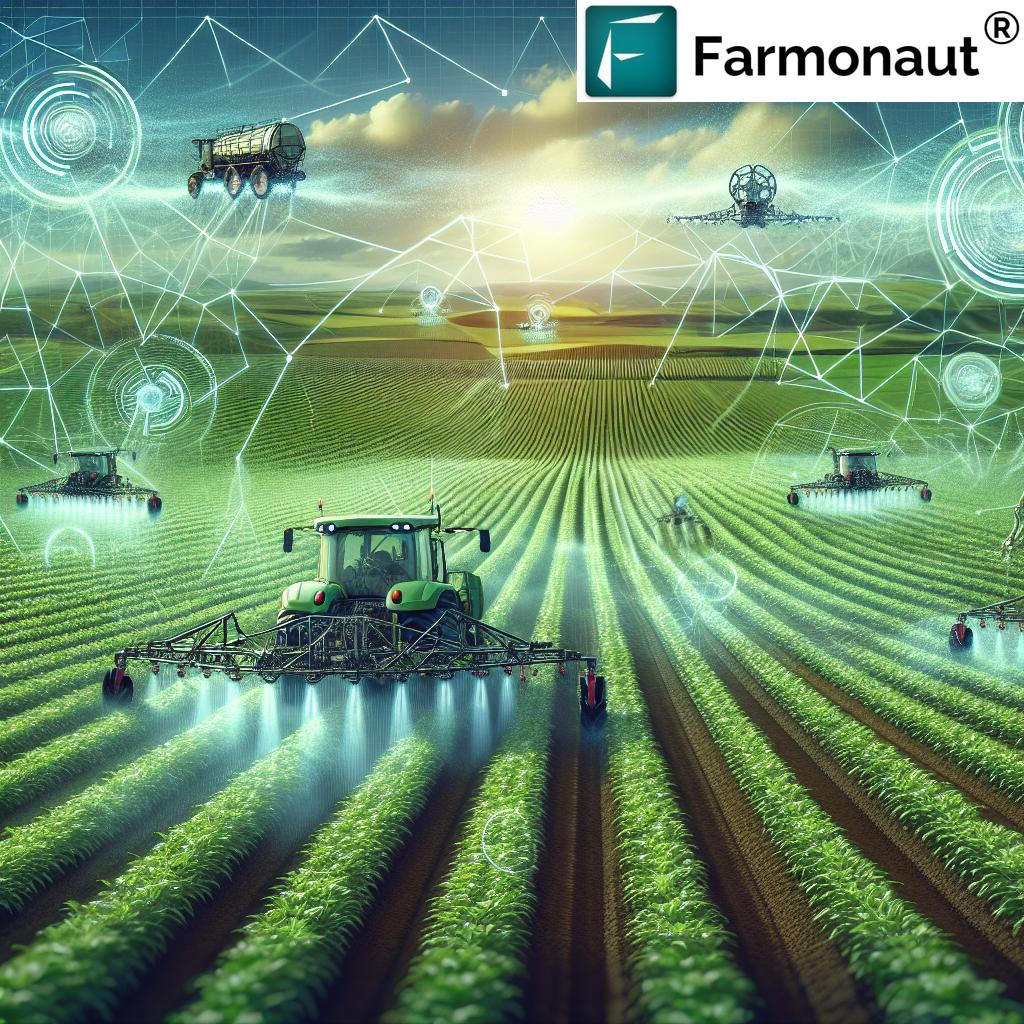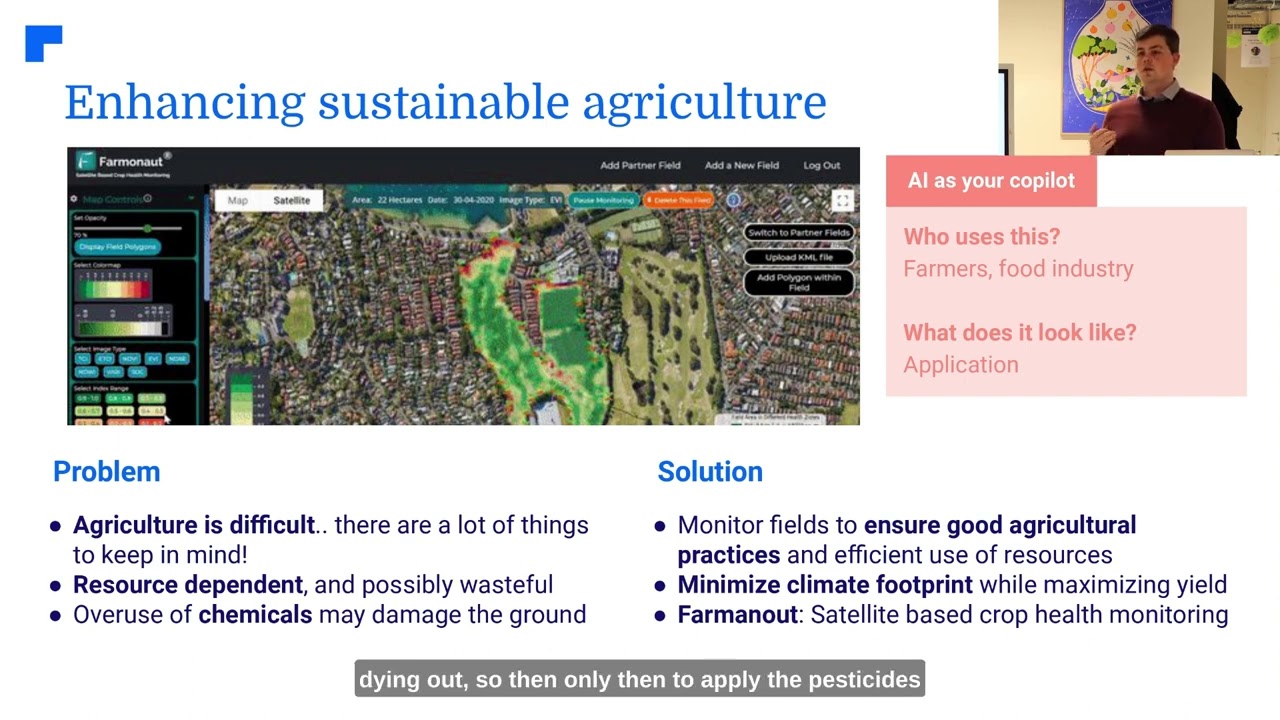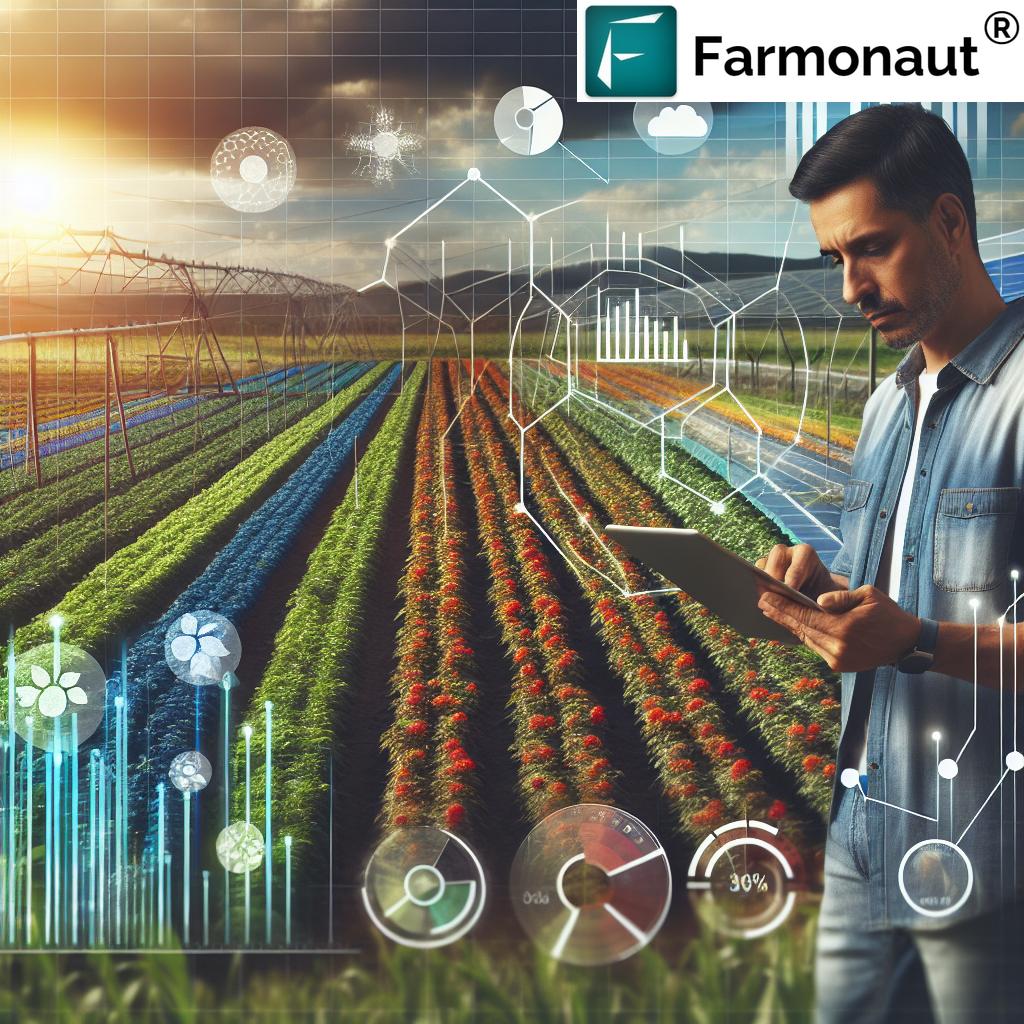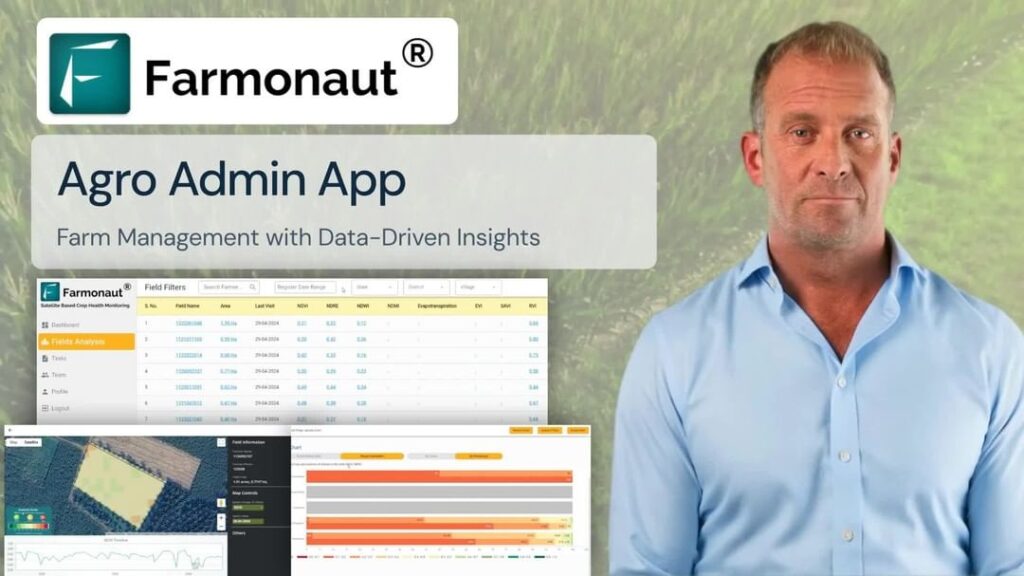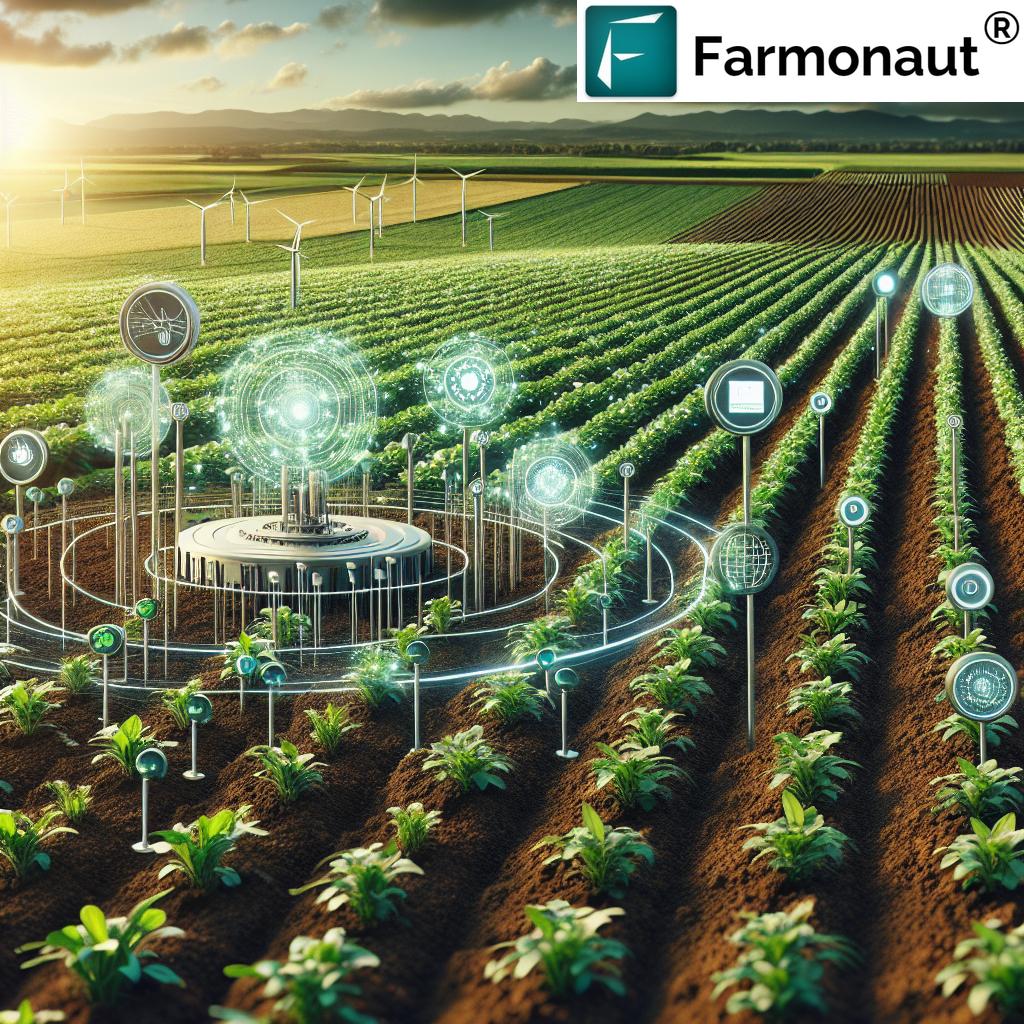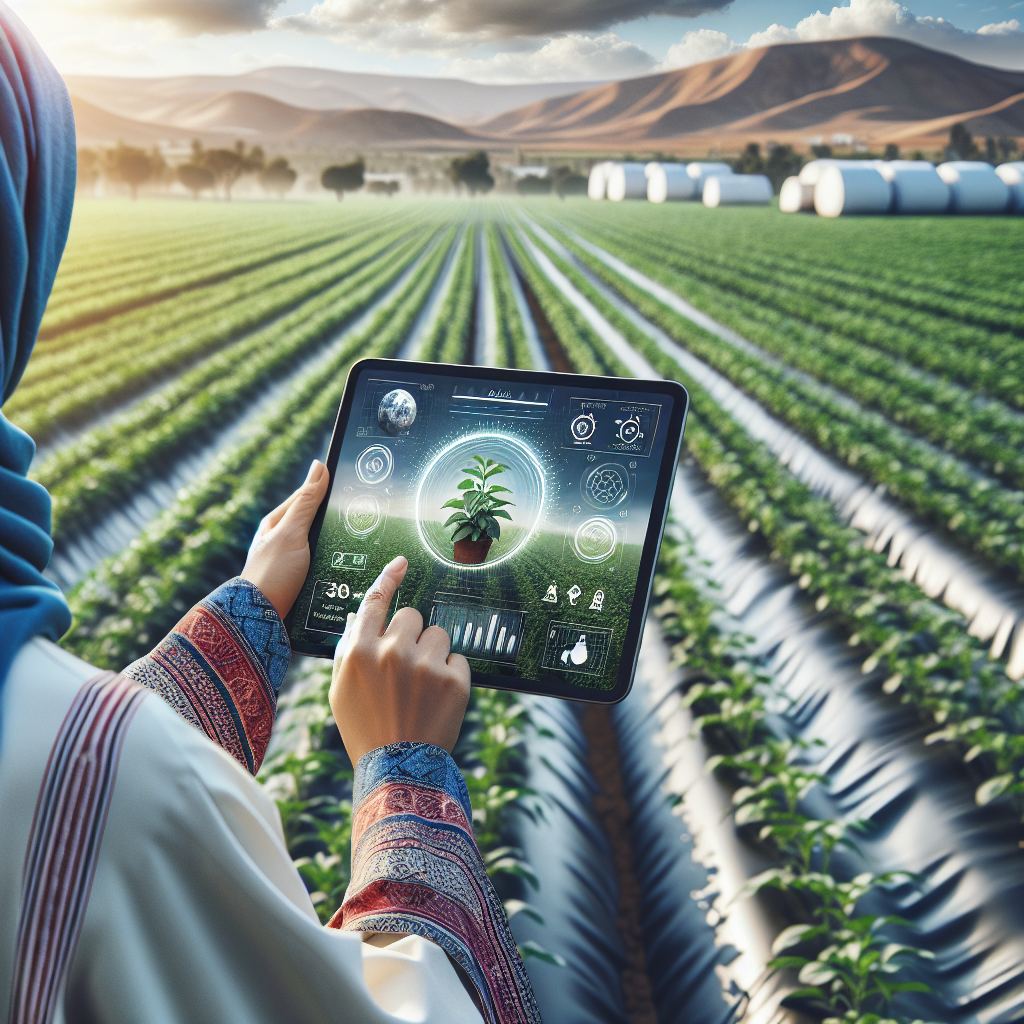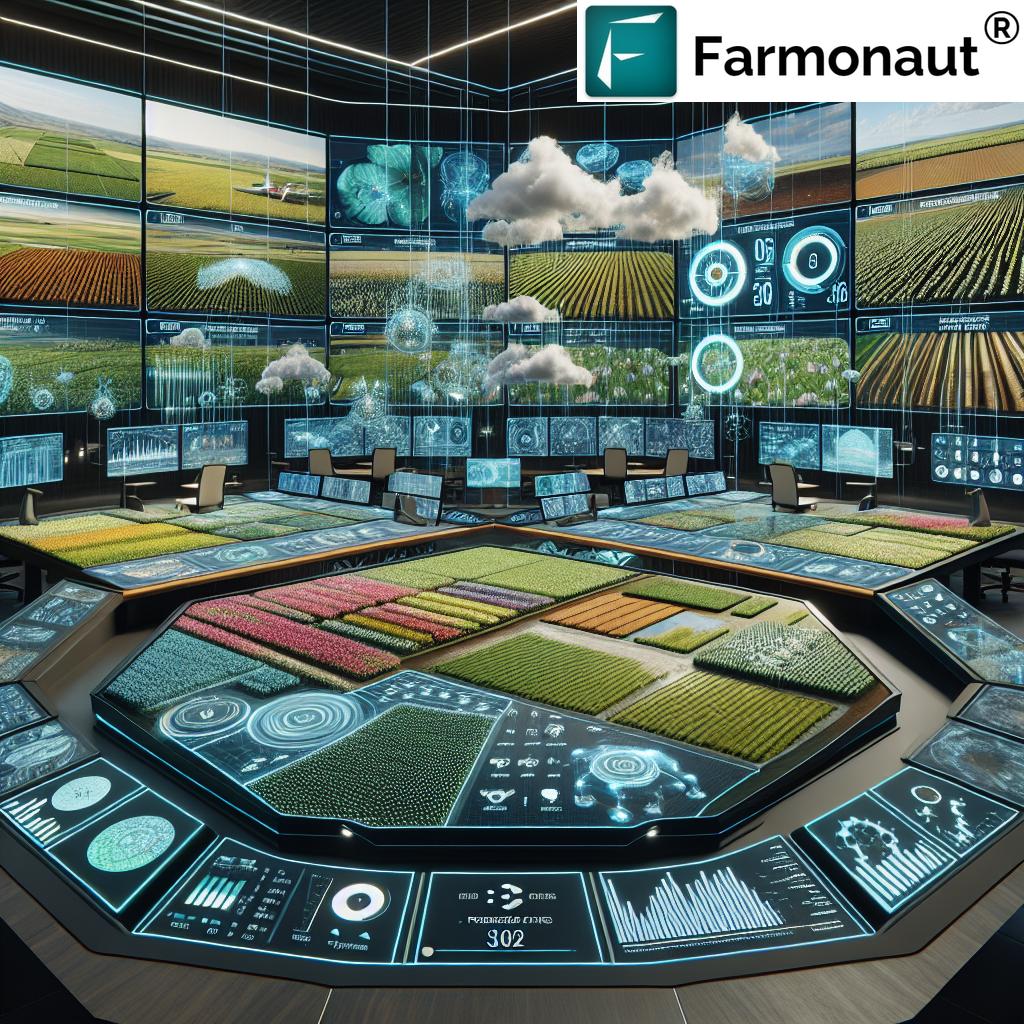Enhanced Field Efficiency: 7 Tech Secrets Unveiled!
Table of Contents
- Introduction: Understanding Enhanced Field Efficiency in Agriculture
- Efficiency Trivia
- 1. Precision Agriculture: The High-Tech DNA of Smart Farming
- 2. Autonomous Robotics & Drones: The Automated Field Revolution
- 3. IoT & Smart Sensors: Data-Driven Soil and Water Management
- 4. AI & Machine Learning: Intelligent Agricultural Optimization
- 5. Geographic Information Systems (GIS): Mapping Sustainable Progress
- 6. Nanotechnology: Precision on a Molecular Scale
- 7. Cutting-Edge Water Management Technologies
- Comparative Benefits Table of Agricultural Technologies
- Section: Farmonaut – Making Field Efficiency Accessible
- Efficiency Trivia #2
- Supply Chain Optimization in Agriculture
- Sustainable Farming Practices & Environmental Impact
- Challenges & Strategic Solutions
- Conclusion
- Farmonaut – Next Steps
- Frequently Asked Questions
Introduction: Understanding Enhanced Field Efficiency in Agriculture
In today’s fast-evolving world, field efficiency in agriculture, farming, and forestry has become more critical than ever. As we confront global challenges—rising populations, changing climates, and the urgent need for sustainable food production—integrating advanced agricultural technology and innovative management practices is no longer optional. From precision agriculture to AI in agriculture and from smart sensors to strategic farm management tools, these “tech secrets” form the backbone of modern, efficient, and sustainable farming.
But what does “enhanced field efficiency” truly mean? It’s the science—and art—of optimizing resources (such as soil, water, labor, and inputs), reducing costs, minimizing waste, boosting crop yields, and ensuring sustainability for future generations. By leveraging state-of-the-art technologies and data-driven decision-making systems, sectors such as agriculture and forestry are undergoing unprecedented transformation.
In this blog, we unveil seven essential technological secrets that are redefining field optimization—including actionable insights on how to implement them for better productivity, sustainability, and profit. We also showcase how Farmonaut, a leader in precision and satellite-powered farm management solutions, is bridging the gap between innovation and accessibility.
“Precision agriculture can increase crop yields by up to 20% using data-driven decisions.”
1. Precision Agriculture: The High-Tech DNA of Smart Farming
Precision agriculture has rapidly emerged as a revolutionary solution to the age-old problem of field variability. By utilizing GPS-guided equipment, satellite imagery, smart sensors, and data analytics, farmers can now map, monitor, and optimize every square meter of their fields for maximum efficiency and productivity.
- Mapping Fields Accurately: Thanks to GPS-enabled tractors and sprayers, we can now create high-precision maps that capture field variability, soil moisture, and nutrient levels. This precision enables targeted seeding, fertilizer, and pesticide applications, minimizing overlap and reducing resource waste.
- Optimized Input Usage: By monitoring crop health with NDVI and multispectral indices, we can apply the right amounts of water, fertilizer, and crop protection. This not only cuts costs, but also boosts yields.
- Advanced Monitoring Tools: Access to Farmonaut’s satellite crop health monitoring provides real-time, actionable insights for every part of our farm, allowing us to detect stress, diseases, or nutrient deficiencies before they become costly issues.
- Auto-Guidance Systems: With powerful auto-guidance in our machinery, we achieve seamless field operations—even in low-visibility or at night—ensuring consistent planting, spraying, and harvesting.
By incorporating precision agriculture and crop monitoring technology into our operations, we not only optimize input usage and improve yields, but also make significant strides toward reducing our environmental impact. These smart farming solutions are truly at the heart of next-generation agriculture.
2. Autonomous Robotics & Drones: The Automated Field Revolution
Autonomous robotics and drones are transforming agriculture by taking over labor-intensive tasks with unmatched accuracy and speed. These devices are invaluable in overcoming labor shortages and reducing manual effort.
- Task Automation: Autonomous robots perform field activities such as planting, weeding, mowing, pruning, seeding, spraying, and even sorting and packing. Their precision helps in minimizing waste and optimizing input efficiency.
- Drone Technology: Drones provide aerial data on crop health, moisture, and nutrient levels, enabling swift detection of issues such as pest outbreaks or water stress. Drone imagery complements satellite data for focused interventions.
- Enhanced Crop Monitoring: Drones and robots enable real-time monitoring of large and small fields alike, delivering actionable insights that drive productivity and deliver sustainable crop management.
The integration of robotics with smart farming solutions and management systems amplifies our ability to operate efficiently, reduce costs, and optimize resource usage.
3. IoT & Smart Sensors: Data-Driven Soil and Water Management
The Internet of Things (IoT) and smart sensors are propelling us into an era of real-time, granular farm intelligence. By deploying soil moisture sensors, temperature monitors, and nutrient detectors, we continuously track the health of our fields.
- Soil Moisture Monitoring: IoT-enabled soil moisture sensors deliver up-to-the-minute readings of soil conditions. With this crucial data, automated irrigation systems can apply water only where and when it’s truly needed—conserving water and ensuring optimal crop growth.
- Smart Fertilizer and Input Usage: By integrating sensors with farm management tools, we adjust fertilizer and pesticide application to match actual crop requirements, improving yields and lowering input costs.
- System Automation: Automated irrigation systems adjust schedules according to real-world soil moisture and weather conditions. This degree of precision maximizes efficiency and minimizes both over- and under-irrigation.
These smart devices and systems empower us to monitor every inch of our fields, optimizing water, fertilizer, and energy usage for both economic and environmental sustainability.
For a deeper dive into smart sensor integration, visit Farmonaut’s farm management platform, which unifies satellite and sensor data for full-spectrum agricultural intelligence.
4. AI & Machine Learning: Intelligent Agricultural Optimization
The future of agriculture is increasingly intelligent, thanks to AI and machine learning. These technologies analyze vast streams of data to identify actionable patterns, anticipate challenges, and drive smart decision-making.
- Predictive Scheduling & Forecasting: AI in agriculture utilizes predictive models to anticipate pest and disease outbreaks, optimize irrigation schedules, and recommend the best timing for planting or harvesting.
- Resource Management Optimization: Algorithms process data from satellites, sensors, and machinery to pinpoint the precise amounts of inputs needed, further reducing waste and improving efficiency.
- Market Analysis & Supply Optimization: AI-driven demand forecasting enables us to align crop production with market needs, reducing inventory losses and enhancing profitability.
Farmonaut’s Jeevn AI Advisory System illustrates how machine learning can synthesize environmental, soil, and crop data to generate personalized recommendations—maximizing farm performance and yields through data-driven insights. Learn more about our large-scale farm management powered by cutting-edge AI.
5. Geographic Information Systems (GIS): Mapping Sustainable Progress
Geographic Information Systems (GIS) enable us to capture, analyze, and visualize the spatial dimensions of our farms, unlocking new opportunities for data-driven optimization.
- Advanced Field Mapping: By overlaying yield, soil temperature, vegetation indices, and soil quality data, GIS helps us recognize zones of high and low productivity in our fields.
- Sustainable Land Use: GIS supports sustainable land planning by identifying potential risks (such as erosion or waterlogging) and recommending optimal crop selection and rotation strategies.
- Data-Driven Farm Management: Integrating GIS data with agricultural technology solutions (such as Farmonaut’s platform) empowers us to optimize land usage and improve resource allocation at scale.
With GIS, we gain not only clarity but also the strategic advantage necessary to advance sustainable farming practices and increase overall productivity.
“AI-powered smart farming solutions can reduce resource waste by approximately 15% in modern agricultural practices.”
6. Nanotechnology: Precision on a Molecular Scale
Imagine monitoring and optimizing nutrient or moisture levels at a scale previously unseen. Nanotechnology, and nanosensors in particular, make this a reality for modern agriculture.
- Soil Health Diagnostics: Nanosensors can detect pathogens, contaminants, and micro-level changes in nutrient and moisture status—allowing for immediate, targeted interventions.
- Real-Time Optimization: By embedding nanoscale devices in our fields, we collect precise data that drives fertilizer optimization, improves irrigation decisions, and ultimately enhances field performance.
- Sustainability: Nanotechnology supports sustainable farming practices by ensuring every input is used to its fullest, eliminating excessive waste and protecting the environment.
Graphene-based nanosensors, for example, have shown enormous potential in monitoring key nutrient cycles, supporting environmental conservation, and optimizing yields through molecular-level intelligence.
7. Cutting-Edge Water Management Technologies
Water is our most precious agricultural resource, and its smart management is essential for field efficiency and sustainability.
- Drip and Micro-Irrigation Systems: These systems deliver precise amounts of water to plant roots, reducing waste and ensuring optimal soil moisture.
- Automated & Smart Irrigation: Automated irrigation systems, controlled by real-time data from soil moisture sensors and local weather information, ensure we only irrigate when necessary—saving water and reducing costs.
- Weather-Responsive Scheduling: By integrating weather forecasts into irrigation planning, we conserve water and minimize risk of disease or nutrient leaching.
With advanced irrigation management tools and technologies like those powered by Farmonaut, we conserve water, optimize growth, and build resilience against climatic uncertainties.
Comparative Benefits Table of Agricultural Technologies
| Technology/Technique | Description | Estimated Efficiency Improvement (%) | Estimated Yield Boost (%) | Sustainability Impact | Best Use Cases |
|---|---|---|---|---|---|
| Precision Agriculture | GPS-guided mapping, field data analytics, and targeted input application. | +20% | +18% | Drastically reduces resource waste and environmental impact. | All crop types/field sizes. |
| Autonomous Robotics & Drones | Automates planting, weeding, crop monitoring, and harvesting. | +25% | +15% | Reduces labor needs and input overuse. | Large fields, labor-scarce regions. |
| IoT & Smart Sensors | Soil, water, and crop sensors for real-time field intelligence. | +17% | +11% | Optimizes water/fertilizer, prevents over-irrigation. | Row crops, orchards, greenhouses. |
| AI & Machine Learning | Data-driven prediction, supply optimization, and decision support. | +16% | +13% | Minimizes loss, directs sustainable choices. | Data-rich farms, supply chain management. |
| GIS | Spatial mapping, yield zoning, risk assessment. | +12% | +10% | Supports long-term sustainable land use. | Mixed enterprise, large-scale operations. |
| Nanotechnology | Nanosensors for molecular-level monitoring and adjustments. | +14% | +8% | Precision targeting minimizes chemical and water waste. | High-value crops, intensive horticulture. |
| Advanced Water Management | Drip, micro- and automated irrigation systems. | +18% | +9% | Significant water conservation, reduced runoff. | Drought-prone or water-stressed regions. |
Farmonaut: Making Field Efficiency Accessible to All
While innovative agricultural technologies are transforming global farming, accessibility and affordability remain pressing concerns—especially for smallholders and developing economies. That’s where Farmonaut shines. As a pioneering agricultural technology company, Farmonaut is committed to democratizing precision agriculture by delivering powerful farm management solutions through accessible apps, web interfaces, and robust APIs.
- Real-Time Satellite Monitoring: Farmonaut’s platform delivers actionable insights on crop health, soil moisture, and critical vegetation indices via satellite-driven dashboards—helping farmers everywhere optimize input usage, reduce waste, and increase yields with unrivaled precision.
- AI-Powered Crop Advisories: Farmonaut’s Jeevn AI system analyzes satellite imagery and farm data, providing tailored agronomy advice, disease and pest alerts, and strategic weather forecasts to boost output and sustainability.
-
Blockchain Traceability: Ensure the authenticity and safety of agricultural products with blockchain-based traceability solutions, protecting both consumers and marketers.
(Learn about blockchain product traceability and its power to enhance supply chain transparency.) - Fleet & Resource Management: Our fleet management tools streamline the use of agricultural machinery, logistics, and on-field resources, driving down operational costs for both farmers and agribusinesses.
- Carbon Footprint Tracking: As sustainable and climate-smart farming gains importance, Farmonaut’s carbon footprinting feature offers real-time emissions monitoring, helping you track, reduce, and report environmental impact.
- APIs for Agritech Integration: Developers and enterprises can leverage Farmonaut’s API to infuse satellite and weather data directly into their digital ecosystems. Explore developer docs to empower your products with high-resolution agronomic data.
Farmonaut eliminates the high cost barrier of traditional precision farming, offering scalable, modular services for individual farmers, agribusinesses, and government agencies.
For plantation, large-scale crop, and forest operations, our crop plantation & forest advisory delivers high-impact guidance for ambitious agricultural projects.
Supply Chain Optimization in Agriculture
Enhanced field efficiency isn’t confined to farm boundaries. In a globalized and connected world, supply chain management is crucial to reducing waste, improving market responsiveness, and maximizing overall sector performance.
- AI-Driven Logistics: AI in agriculture supports supply chain optimization by analyzing real-time production, demand fluctuations, and transportation routes. This reduces transit costs and ensures timely, quality crop deliveries.
- Inventory Management: Smart forecasting tools minimize perishable losses and align post-harvest handling with market demand, ensuring higher returns for farmers.
- Transparency & Traceability: Farmonaut’s blockchain-based traceability solution provides end-to-end transparency in the food and textile supply chains, increasing buyer trust and facilitating fair trade.
A digitally optimized supply chain contributes as much to field efficiency as on-field precision. Strategic integration of AI, IoT, and traceability tools ensures sustainable food systems—from farm to fork.
Sustainable Farming Practices & Environmental Impact
Every step we take towards field efficiency also supports the larger goal of sustainability. It’s not only about maximizing yields, but also about conserving the soil, protecting our water resources, and reducing climate impact.
- Regenerative Agriculture: Techniques that restore soil health, increase carbon sequestration, and build resilience. Combined with tech-powered monitoring, these practices deliver long-term gains.
- AI-Directed Irrigation & Pest Management: Applying just the right amounts of water and crop protection at the right times prevents waste and excess runoff, ensuring environmental sustainability.
- Carbon Tracking: Farmonaut’s carbon footprinting tool quantifies emissions in real time, empowering us to adopt practices that reduce our climate impact and comply with environmental mandates.
By embedding sustainability in every layer—data, technology, and management—we’re building the future of agriculture from the ground up.
Challenges & Strategic Solutions
While these technological advancements promise enormous improvements, there are hurdles to overcome for universal adoption:
- Initial Costs: Cutting-edge systems can be costly. Solutions such as Farmonaut’s subscription tiers are designed to make precision agriculture affordable for all farm sizes.
- Technical Complexity: Not all farmers are tech experts. Supported onboarding, education, and intuitive apps are critical to foster adoption.
- Data Privacy: Trustworthy technology providers must protect our field and operations data with strong encryption and ethical data usage policies.
- Digital Divide: Infrastructure-building (including rural connectivity and mobile device access) is essential to avoid leaving smallholders behind.
Ultimately, with supportive policies, robust infrastructure, and continued innovation, we can pave the way for inclusive global field efficiency.
Conclusion
It’s clear: Enhanced Field Efficiency is more than a buzzword—it’s a call to action, guiding us to reinvent agriculture for greater productivity, profitability, and sustainability. By embracing the seven tech secrets outlined here—including precision agriculture, robotics, IoT, AI, GIS, nanotechnology, and smart water management—we transform not just fields, but entire communities and food systems.
With platforms like Farmonaut making advanced technology as accessible as a smartphone tap, the benefits of digital and data-driven farming are within reach for everyone. From smallholder farmers to global agribusinesses, the time to act is now—ushering in a new era of sustainable food security and environmental stewardship.
Ready to Experience Enhanced Field Efficiency?
Explore how your farm or agribusiness can benefit from next-gen farm management tools:
Interested in tailored solutions? Discover Farmonaut’s crop loan and insurance verification and explore fleet management for agribusiness logistics.
If you’re a developer or enterprise, tap directly into Farmonaut APIs (see docs).
Join us on the path to smarter, data-driven, and sustainable agriculture—unlock unparalleled field efficiency, today!
Frequently Asked Questions
What is enhanced field efficiency in agriculture?
Enhanced field efficiency refers to optimizing agricultural operations to increase productivity, reduce costs, improve yields, and support sustainable farming practices using technology, data, and innovative management.
How does precision agriculture boost productivity?
By employing GPS mapping, satellite monitoring, and data-driven insights, precision agriculture enables targeted resource application, reducing waste and increasing yields up to 20% over conventional approaches.
What role does Farmonaut play in field efficiency?
Farmonaut offers real-time satellite-based crop and soil analysis, AI-driven advisory systems, carbon and resource management, blockchain-based traceability, and scalable solutions accessible to all users via app, web, or API.
Are these technologies suitable for smallholder farmers?
Yes, solutions like Farmonaut are designed to make precision agriculture and advanced management tools affordable and accessible to farmers of all sizes, providing flexible packages for diverse needs.
How does smart irrigation reduce costs and water waste?
Automated irrigation systems, guided by soil moisture sensors, deliver water exactly where and when needed, keeping costs low and preserving valuable water resources for future cycles.
How can I access Farmonaut’s solutions?
You can access Farmonaut through the web and mobile apps or integrate satellite data with your own software via API access.
Why is blockchain used for product traceability?
Blockchain ensures every step in the agricultural supply chain is secure and transparent, reducing fraud, building consumer trust, and complying with stringent food safety standards.


